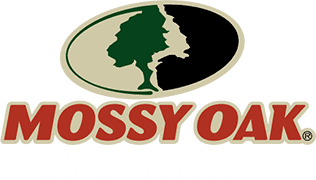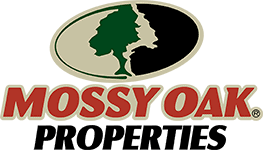Taxes might not be the most exciting topic, but when you are dealing with real estate investments, they are something you can not afford to ignore. The 1031 Exchange is a valuable strategy for property owners looking to defer capital gains taxes and grow their investment portfolios.
So, what exactly is a 1031 Exchange? Named after Section 1031 of the Internal Revenue Code, it allows real estate investors to swap one investment property for another like-kind property without an immediate tax hit. This means you can defer paying capital gain taxes on the sale of a property by reinvesting the sale proceeds into a new investment property.
As Kevin Teston from Mossy Oak Properties of Augusta, Georgia, explains: “Section 1031 details a method by which a property owner trades one property for another without having to pay federal income tax on the transaction at that time. By using the exchange, the tax is deferred to some point in the future, usually when the newly acquired property is sold.”
In simple terms, instead of losing a chunk of your sale proceeds to taxes, you can use the full amount to invest in a new property. This tax deferral can significantly enhance your ability to grow your real estate assets over time.
Special Rules for Depreciable Property
It’s important to note that special rules apply when dealing with depreciable property—assets like buildings or equipment that lose value over time due to wear and tear. Depreciation can affect the adjusted cost basis of your property, which impacts the calculation of any capital gain on sale. Understanding these nuances is crucial to avoid unexpected taxable gains and to make the most of a 1031 Exchange.
How Does a 1031 Exchange Work?
- Sell Your Current Investment Property— You begin by selling your existing property, known as the relinquished property. This could be a rental property, commercial building, or any real estate held for investment purposes.
- Hire a Qualified Intermediary— The sale proceeds do not go directly to you. Instead, they are held by a qualified intermediary (a neutral third party who facilitates the exchange of properties).
- Identify Replacement Properties— Within 45 days of the property sale, you must identify up to three potential replacement properties. These are your like-kind properties, which must be similar in nature to your original property.
- Purchase the Replacement Property— You have a total of 180 days from the sale of your original property to close on one or more of the identified replacement properties.
- Complete the Exchange— The qualified intermediary uses the exchange funds to purchase the replacement property on your behalf, finalizing the transaction.
It is important to adhere strictly to these time limits. Missing the 45-day identification period or the 180-day exchange period can result in the recognition of gain, meaning you will owe capital gain taxes on the sale.
Qualifying for a 1031 Exchange
Before you get too excited, it is important to understand that not every property or transaction qualifies for a 1031 Exchange. As Teston notes, “In order to qualify for a tax-deferred exchange under Section 1031, certain requirements must be met. The property must be held for investment, and there are time limits for finding a replacement property.” Here are some key qualifications:
- Investment Purpose: Both the property you are selling and the one you are buying must be held for investment purposes or used in a business. This means your primary residence or personal property will not qualify.
- Like-Kind Property: The properties exchanged must be of like-kind. In real estate, this term is broadly interpreted, so you could exchange a single-family rental property for an industrial property or vacant land.
- Proper Use of Exchange Funds: The proceeds from the sale must be used to purchase the replacement property. Any cash proceeds you receive directly could be considered boot (non-like-kind property) and may be subject to taxes.
Types of 1031 Exchanges
1. Delayed Exchange
This is the most common type, where you sell your current property and then purchase a replacement property within the IRS deadlines. The key is that there is a gap between the sale and purchase, but you must adhere to the time limits.
2. Reverse Exchange
In a reverse exchange, you purchase the replacement property before selling your original one. This can be advantageous if you find an ideal property but have not yet sold your current investment property. However, reverse exchanges are more complex and require careful planning.
3. Build-to-Suit Exchange
Also known as an improvement exchange, this allows you to make improvements on the replacement property using the exchange funds. All improvements must be completed within the 180-day exchange period.
Key Rules and Regulations for 1031 Exchanges
To successfully execute a 1031 Exchange, you need to follow certain rules. Breaking any of these exchange rules can lead to the recognition of gain and result in taxable income.
- Use a Qualified Intermediary: You cannot receive the sale proceeds directly. A qualified intermediary holds the funds and facilitates the exchange.
- Adhere to Time Limits: The 45-day identification period and the 180-day exchange period are strict deadlines with no extensions.
- Like-Kind Requirement: The properties must be like-kind, meaning they are of the same nature or character. This includes most real estate held for investment purposes.
- Avoid Receiving Boot: Any cash proceeds or non-like-kind property received may be taxable.
- Investment Purpose: Both properties must be held for investment or used in a business.
1031 Exchange for Different Types of Land
A 1031 exchange is not limited to swapping identical properties. This opens up opportunities to diversify your real estate investment property portfolio.
- Recreational Land and Ranches
If you are interested in outdoor spaces, you can exchange urban investment properties for recreational land, ranches, or hunting land. As long as both properties are held for investment purposes, this can be a strategic move.
- Vacant Land
Exchanging a rental property for vacant land is an option. Vacant land can appreciate over time and offers different investment opportunities.
- Industrial Property
You might consider exchanging a residential property for industrial property. This allows you to tap into different sectors of the real estate market.
Pros and Cons of a 1031 Exchange
| PROS | CONS |
| Deferral of capital gain taxes | Strict time limits to identify and close |
| Ability to leverage investment properties | Complexity of rules and regulations |
| Portfolio diversification | Costs associated with qualified intermediaries |
| Increased purchasing power | Potential for taxable income if rules are not followed |
| Preservation of capital for investment | Limited to like-kind property exchanges |
| Opportunity to acquire higher-value property | Not applicable to personal property after 2017 |
| Potential for increased cash flow | Risk if replacement property decreases in value |
What to Consider Before Starting a 1031 Exchange
Before initiating a 1031 Exchange, consider the following:
- Financial Readiness— Evaluate your financial situation to make sure you can meet the purchase price of the replacement property and cover any associated costs.
- Professional Guidance— Engage with financial advisors, tax advisors, and real estate professionals who are experienced in 1031 Exchanges. Their expertise can help navigate the process and avoid pitfalls.
- Investment Goals— Reflect on your long-term investment purposes. Consider how the exchange aligns with your strategy for capital appreciation, cash flow, and portfolio diversification.
- Market Conditions— Analyze the real estate market to identify opportunities and assess the fair market value of potential replacement properties.
Making decisions about a 1031 Exchange can be tricky, but you do not have to figure it out on your own. We are experts in this area at Mossy Oak Properties. We will work with you to find like-kind replacement properties that align with your investment goals. If you are thinking about swapping your current property for something new or looking to expand your real estate portfolio, we are here to support you every step of the way.
REFERENCES:


